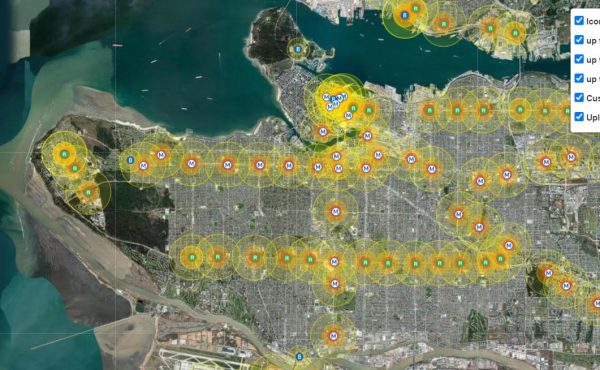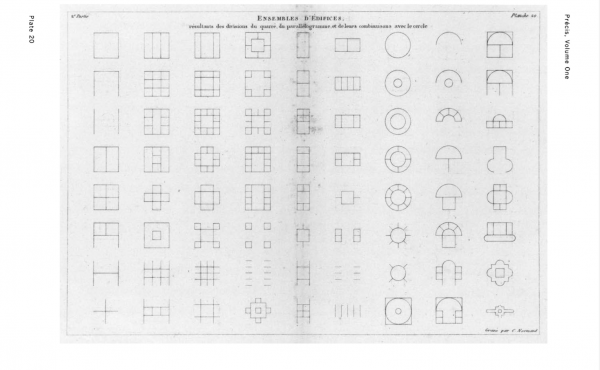
Stupid is as stupid does. We’ve forgotten how to make cities that work for everyone.
Critics will say that our local affordability crises can be root-caused by Vancouver’s longstanding, hyper-capitalistic, approach to rewarding development proponents with density, height and other land use entitlements in exchange for better livability, neighbourliness and contextual response. There is truth to this criticism of what, at the time, was considered world-leading best practice. Our highly discretionary zoning simply never went far enough to secure affordable housing in exchange for taller, denser buildings.
Reaching back to the advent of this type of zoning, a unique system that awarded economic wealth in exchange for making cities and their neighbourhoods better, we can hopefully appreciate the proactive intention of “enjoying” the market in a way that served all interests, not just those of development proponents. We became decently effective at administrating this win-win approach after a few decades of practice. The entire world was interested in how we would work more creatively with the development community in a way that secured public benefits for all to enjoy. We practiced, through our home-grown approach to regulation, how to share. We were able to achieve an amenity-rich city without overly rewarding speculators who contribute nothing to making our lives better.
The development industry prospered while we strengthened the city by focusing on our distinctive neighbourhoods. Our shared “zoning wealth” was attributed to social, cultural, and recreational needs. Housing was not out of reach and somewhat aligned with local incomes. Property taxes were kept low and contributed to political stability. Senior levels of government were participating in non-market housing that, while always insufficient, at least augmented what the city could generate via the market.
Urban design mattered too, with the market financially benefitting from best practices that made projects more saleable.
Then it all fell apart. Simply, we should have asked for more. Land prices would have adjusted to meet more socially responsible discretionary approval obligations, including affordable housing.
Arguably, because we did not do this, the discretionary tools that helped negotiate productive market responses that strengthened local communities, have now been sidelined in favour of simplistic (in the case of the Broadway Plan – unsophisticated) re-zoning programs that first generously award speculators, and second, produce heavily relied on (read: presumptive) development revenue for capital projects to keep property taxes “artificially” low. All before housing is actually constructed.
The end renter/purchaser pays for these costs disguised as “business as usual”. We do not question whether we are being smart about how we do this, with the consequences of shackling our young people to their rents and mortgage payments. The current “let’s re-zone our way to affordability” is having the opposite effect of stealing their future. No amount of supply produced under the current development paradigm—especially generated by expensive towers requiring land assembly—will make their lives better.
We have developed bad habits.
Ok, so our old system of city-making was complicit in the ever-increasing costs of land and related housing. Again, no argument from me that we “released the development hounds” as we practiced better ways to engage the market. Being amenity-rich comes with a cost. We at least got something back over those decades of practicing—amenities, livability, neighborliness, character—for our genuine attempt to make a better city for all.
But more recently, self-promotional political leadership aided and abetted by senior bureaucrats, “imported” planning leaders who were more interested in personal legacy than proactively involving neighbourhoods to address the grand challenges of the day. Staff attrition and a related lack of best practice training have led to corporate memory loss and a disconnect of shared values. This, coupled with the budgetary pressures of a growing region exacerbated by senior government downloading, has caused governments to develop bad habits.
With each passing day, these habits grow, becoming accepted as accepted behavior. The current momentum is too strong to reverse through public engagement and consultation, especially when solutions are well-developed before they hit open houses.
Very bad habits.
These take us even further away from what truly matters—a city that works for everyone. Local governments have little capacity to learn from their policy mistakes, let alone confess when they are or were wrong. Instead, the opposite happens with “another new policy” extending or amplifying bad practice momentum, leading to worse policies that do the opposite of their intention, which we hope is to generate affordable housing so all people can thrive.
But is creating truly affordable housing for all the real intention of recent policies, including the Broadway Plan and Provincial Bill 47?
These have put the speculative market into hyperdrive. As of this writing, approximately 60 towers are proposed for the Broadway Corridor! Yet, this is still not enough to satisfy the City of Vancouver and their “development partner”—the Province of British Columbia.
Or…is the real driver that underpins recent housing policies simply focused on producing more addresses that generate new property taxes, with towers as the most exploitive form for printing $ because upper floor views of our awesome natural setting generate higher assessments and produce more taxes compared with lower scaled buildings without mountain or ocean views.?
These new towers—housing an expanded tax base—are the gift that keeps on giving so that municipal taxes remain as low as possible, with our children picking up the bill.
Again, they pay as we steal from their future. I would not be surprised if somewhere, hidden away in a locked file cabinet, is a spreadsheet comparing presumptive tax revenue of “towers with awesome views” vs “neighbourhood-scaled buildings, that do not block bust, while providing family-sized housing with ground-oriented addresses”.
Local governments should rebrand as “Towers R Us”.
None of these freshly minted towers are truly affordable when indexed to local incomes. Again, land speculators will take their pound of flesh at the beginning before re-zoning and related development applications are submitted—with many investors also just sitting on their assembled land, waiting for future policies that further reward their land banking, as with the current Broadway Plan.
Let’s not forget that re-zonings are the most expensive approval process ever conceived. We continue building in concrete— expensive! We continue to put a few cars underground—expensive! And, of course, tower projects need to be cleverly named and marketed to distinguish themselves and gain market share.
Our kids pay for all of this.
Yet, we continue to ram these projects, generated under the current development paradigm, down their throats. Oh, and they block bust, too.Yes, a few landowners who are lucky enough to have their overpriced property acquired and assembled can retire early to somewhere exotic.
Our kids pay for their early retirement, beach time, and fruity drinks.
Well, at least the folks living next to these new towers are in perpetual shade as global temperatures rise.
It is time to hit pause and realize the madness our leaders and highly paid civil servants have created, to better understand how we arrived at this moment. We can then take stock of how to produce true affordability by re-tooling how we engage with the market so that a leaner, neighbourhood-friendly, approach to city making can be understood, implemented and practiced.
This is not a dream. It is possible through more productive discussions leading to better ideas.
There is a better way that relies on minimal land assembly, more efficient approvals, smarter construction approaches, and little to no marketing or real estate commissions. The projects sell themselves to families and friends.
There are better practices that keep private land private, opening up new possibilities for wealth creation and family legacy over time. No more non-value-added speculation, flipping or additional costs of our current exploitive development culture is required. This serves very few, and as mentioned, ultimately, our kids pay for it.
Current landowners can still retire early and sip fruity drinks on an exotic beach. They can do this without selling their land—a gift that keeps on returning value to themselves, to their kids, and to your loved ones.
We already have all of the regulatory tools to do this. We have simply put them away when they could evolve to better achieve the social objective of true affordability. Land prices will adjust.
To those that have overpaid in their presumptive speculation: get over it…you will still make a generous profit.
Otherwise, our bad habits will only get worse—as now under consideration with the Broadway Plan. Political leaders simply need to roll up their sleeves and take the time to understand that there are better ways to achieve the shared goal of cities that work for everyone.
This assumes our leaders care about what is truly important. Hopefully, better ideas will be habit-forming.
***
Scot Hein is a retired architect, former senior urban designer at the City of Vancouver and the University of British Columbia. He is an adjunct professor of Urban Design at UBC, lecturer at Simon Fraser University and founding board member of the Urbanarium.





One comment
Awesome article! A good example of what the result of “better practices” might look like is the alternative proposal by the Jericho Coalition for the Jericho Lands. Check out their videos on JerichoCoaliton.org and JerichoCoalition.org/videos to get a sense of what they propose instead of the luxury high-rise tower plan by the MST Development Corporation!